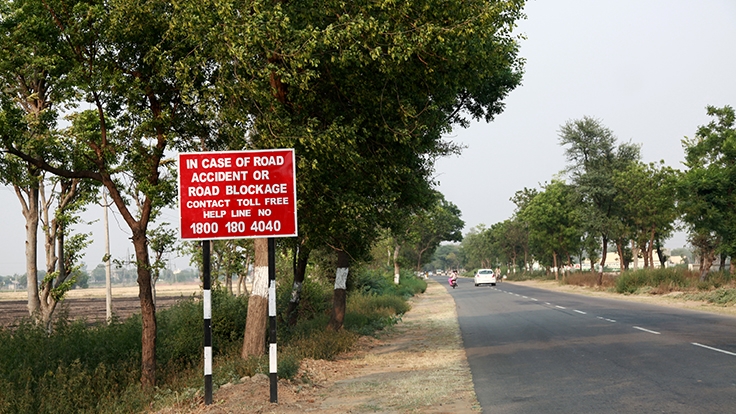Economic activity grows with improved roads
The improved roads have increased local business prospects and slowed down migration to cities. Manjeet Kaur, a resident of Gill village said, “Our village now offers a better life - the modernity of the city along with the peace and quiet of the countryside. In fact some of our people who had moved out, are coming back to the village.”
In Kharar, near Chandigarh, the newly-widened road prompted Ashwini Kumar to move his shop from the village market to rented premises along the roadside. "I am spending on rent but my earnings have grown as customers can now spot my shop and park safely nearby," he said.
Widow Binder Kaur’s fortunes have also changed. Kaur, 65, who lives with a physically challenged son and his family, led a hand-to-mouth existence. She used the opportunity provided by the widened road to set up a sugarcane juice stall on the road’s hard shoulder and always has customers on this busy stretch. “The widened road has come as a boon. Crossing the road has become safe and I am able to serve customers on the other side as well," she said.
Improvements in the road's riding quality have reduced the time spent in commuting. Auto-rickshaw driver Surinder Singh can now reach Sante Majra, a popular destination around 5 kilometres away from the Kharar bus stand– in about 12 minutes. “Earlier it took a minimum of 20 minutes, and the ride was very bumpy,” he said.
A strategic master plan for rail, road and air infrastructure developed
The project has also sought to strengthen the Punjab Public Works Department’s capacity to plan, manage, and maintain the road network, and has helped computerize the department’s functioning to improve efficiency. It has supported a multimodal transport study that draws up a strategic master plan for the development of Punjab’s rail, air and road infrastructure over the next 10 to 15 years, enabling the state to plan for and attract financing for its future development.
For better road safety, a web based accident data collection system has been prepared which will be installed in police stations to collect and analyze road accident data. A GIS based road information system is also under preparation for the use of road and traffic agencies as well as the public.
Innovative contracting ensures transparency, high quality maintenance
To ensure that the quality of roads, once improved, would be maintained, the project introduced a new contracting system that makes firms accountable for managing the roads for a period of 10 years. The system has been pioneered in the state's Sangrur district. “This is the first time in India that such a system is being pioneered,” said Rajesh Rohatgi, senior transport specialist at the World Bank.
Under the system, the hired road construction company has to ensure that the contracted stretches remain free of cracks and potholes for 10 years. It must also ensure that road signs are visible in the dark, crash barriers are in the right places, road edges and lanes are well-marked, milestones are placed at regular intervals, and an emergency toll free number is prominently displayed throughout. “The payment depends on the fulfilment of specific performance criteria. This ensures good quality maintenance over the long-term," said Anil Sharma, deputy project director.
Explaining the benefits of the new system, Sharma said: "The concept of Output and Performance-based Road Contract does away with repeated contracting and is a more transparent form of doing business.”
The contractor's performance is scientifically measured through a high-tech monitoring system. "We have an imported Road Measurement and Data Acquisition System (ROMDAS) which is fitted onto a vehicle,” explained Sharma. “When this vehicle moves, the system assesses the ride quality in a scientific manner. This data is then fed into the contractor's performance evaluation." The system also has a camera fitted on top of the vehicle which periodically takes photographs of the road and the signage so that maintenance and repair are closely monitored.

 "Trucks would blow their horns or play loud music or even park their vehicles inside the village. There were several accidents," Singh recounted. "Now, I sleep a lot better and feel more energetic throughout the day."
"Trucks would blow their horns or play loud music or even park their vehicles inside the village. There were several accidents," Singh recounted. "Now, I sleep a lot better and feel more energetic throughout the day."